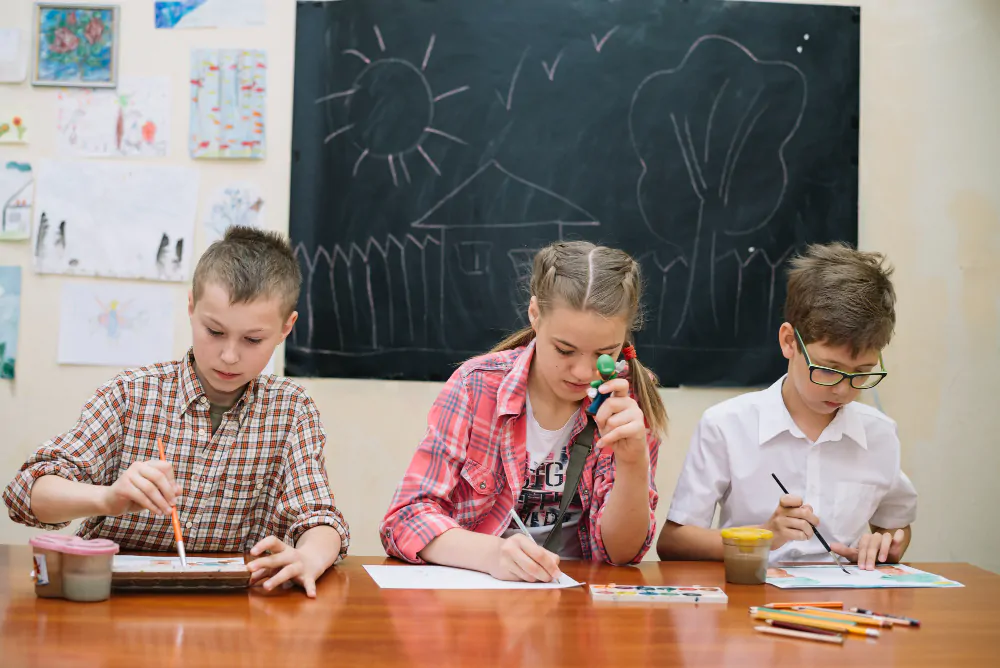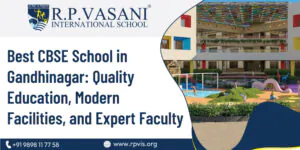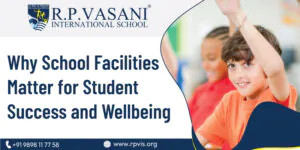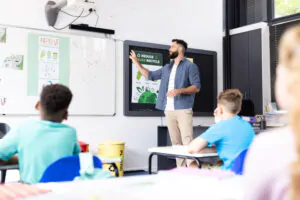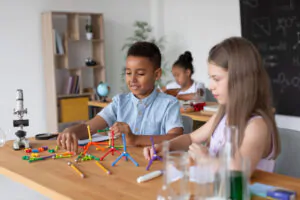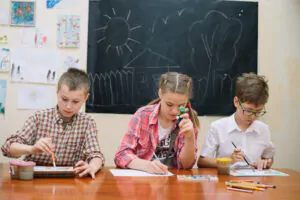Education has evolved dramatically over the decades. At R P Vasani Foundation, through R.P. Vasani International School, the focus is on integrating innovative teaching practices while respecting valuable traditional methods. Understanding the difference between traditional and modern teaching methods helps parents and educators make informed decisions about the most effective way to educate students in today’s dynamic world.
Traditional Teaching Methods: A Foundation of Knowledge
Conventional instructional approaches have historically formed the foundation of education. Rooted in structured curriculum, classroom lectures, rote learning, and teacher-centered instruction, traditional methods focus on the systematic delivery of knowledge. In traditional classrooms, the teacher is the primary source of information, and students follow a linear path to acquire facts and skills.
Characteristics of traditional teaching methods include:
- Lecture-based lessons
- Memorization and recitation
- Standardized textbooks
- Written examinations and assessments
- Focus on discipline and classroom order
At R P Vasani International School, traditional methods are valued for their ability to provide a strong academic foundation, particularly in subjects like mathematics, science, and languages. These methods have proven effective over decades in building discipline, study habits, and core subject knowledge.
Modern Teaching Methods: Transforming Learning
On the other hand, modern teaching methods prioritize interactive, student-centered learning. These approaches leverage technology, collaboration, and critical thinking exercises to make education more engaging and adaptable to individual learning styles. Modern classrooms integrate tools such as digital classrooms, smartboards, online assessments, and interactive simulations.
Key characteristics of modern teaching methods:
- Student-centered learning with active participation
- Use of multimedia and technology for conceptual understanding
- Collaborative projects and group activities
- Critical thinking, problem-solving, and inquiry-based learning
- Assessment through project work, presentations, and practical demonstrations
At R P Vasani Foundation, modern teaching methods are implemented from nursery to Grade 12, allowing students to explore, question, and understand concepts deeply rather than simply memorize information.
Benefits of Modern Teaching Methods
Modern teaching methods provide several advantages in today’s educational landscape:
- Enhanced Engagement: Students actively participate in lessons.
- Critical Thinking: Problem-solving and inquiry-based learning develop analytical skills.
- Digital Literacy: Early exposure to digital classrooms prepares students for future careers.
- Collaboration Skills: Group projects and discussions foster teamwork.
- Personalized Learning: Teachers can address individual student needs using technology.
At R P Vasani Foundation, these benefits are maximized through innovative teaching strategies supported by modern infrastructure.
Role of Technology in Modern Teaching
Digital classrooms, online assessments, and multimedia tools are central to modern education. At R.P. Vasani International School, technology is integrated across grades, making learning interactive and data-driven.
- Smartboards enable dynamic presentations and interactive lessons.
- Tablets and computers allow access to educational resources and research projects.
- Virtual labs provide hands-on experience in science and technology subjects.
- Online assessments help teachers track student progress in real-time.
By combining traditional discipline and curriculum with modern technological tools, students enjoy a holistic educational experience.
Developing 21st-Century Skills
Modern teaching methods go beyond academics. At R P Vasani Foundation, the goal is to develop well-rounded individuals equipped with:
- Communication and presentation skills
- Digital literacy
- Critical thinking and problem-solving
- Creativity and innovation
- Social and emotional intelligence
These skills are critical in navigating higher education and the modern workforce. The integration of traditional and modern methods ensures students are academically strong and future ready.
Why Choose Us
At R P Vasani Foundation, the difference between traditional and modern teaching methods is not just theoretical—it is a practical, student-centered philosophy. By combining strong academic foundations with interactive, technology-driven learning, students experience a comprehensive educational journey. From nursery to Grade 12, every stage is tailored to foster knowledge, creativity, discipline, and critical thinking. Teachers are trained in both traditional pedagogy and modern digital tools, creating an enriched environment. Choosing R P Vasani Foundation means investing in quality education that bridges the best of both worlds and prepares students for lifelong success.
Conclusion
Understanding the difference between traditional and modern teaching methods is key to providing quality education. At R P Vasani Foundation, students benefit from a hybrid approach that merges strong academic foundations with interactive, technology-driven learning. From nursery to Grade 12, every student experiences a balanced educational journey that fosters knowledge, creativity, discipline, and critical thinking. Modern teaching tools such as digital classrooms, virtual labs, and multimedia content complement traditional methods, preparing students for higher education and future careers. Choosing R P Vasani Foundation guarantees comprehensive, future-ready learning in a nurturing environment.
FAQs on Traditional vs Modern Teaching Methods
What is the main difference between traditional and modern teaching methods?
Traditional methods are teacher-centered, focusing on memorization, while modern methods are student-centered, interactive, and technology-driven.
Does R.P. Vasani International School use both teaching methods?
Yes, the school integrates traditional and modern methods from nursery to Grade 12.
What are the benefits of modern teaching methods?
Enhanced engagement, critical thinking, collaboration skills, digital literacy, and personalized learning.
Are digital classrooms used in modern teaching at RPVIS?
Yes, smartboards, tablets, and online resources are integral to modern learning.
How do traditional methods help students?
They provide a strong academic foundation, discipline, and structured learning habits.
Can students learn better with a mix of traditional and modern methods?
Yes, combining both ensures foundational knowledge and interactive, skill-based learning.
Are assessments different in modern teaching methods?
Yes, modern methods include project work, presentations, practicals, and online quizzes along with traditional exams.
Do modern teaching methods help in preparing for future careers?
Absolutely, they develop 21st-century skills such as digital literacy, creativity, and problem-solving.
How do teachers adapt to modern teaching methods at RPVIS?
Teachers receive training in digital tools, interactive lessons, and student-centered pedagogy.
Is student participation higher in modern classrooms?
Yes, interactive activities, discussions, and projects increase engagement significantly.
For more insights on The Difference Between Traditional and Modern Teaching Methods or related blogs, call us at +91 9898117767 or email info@rpvis.org.

